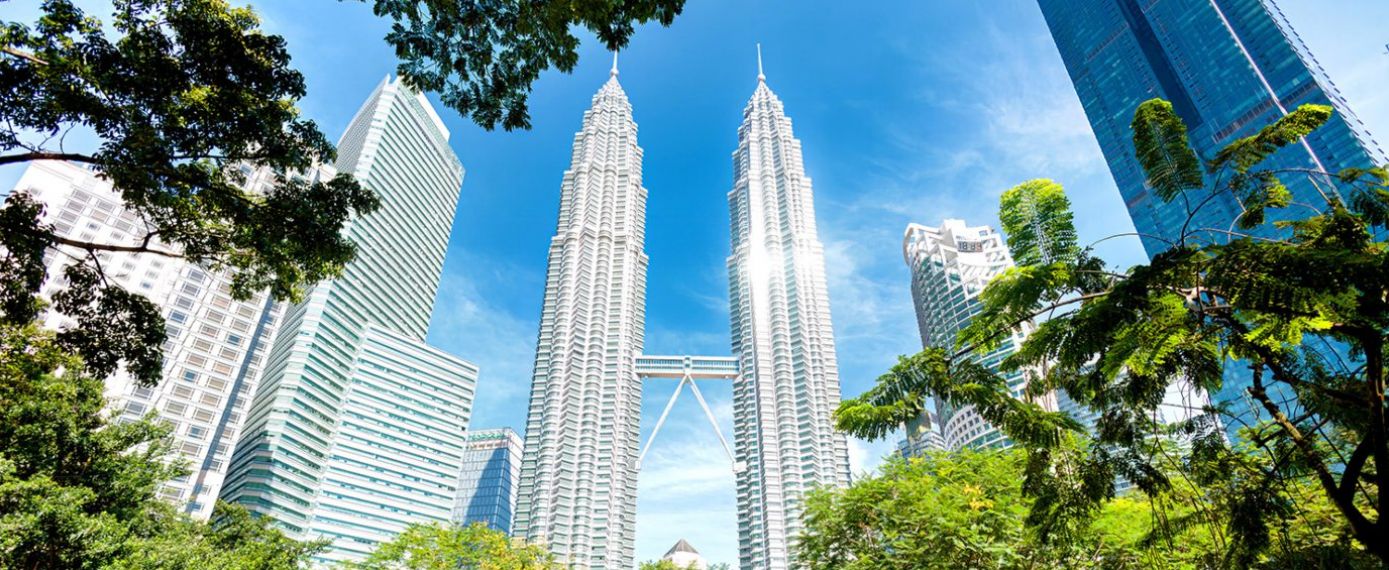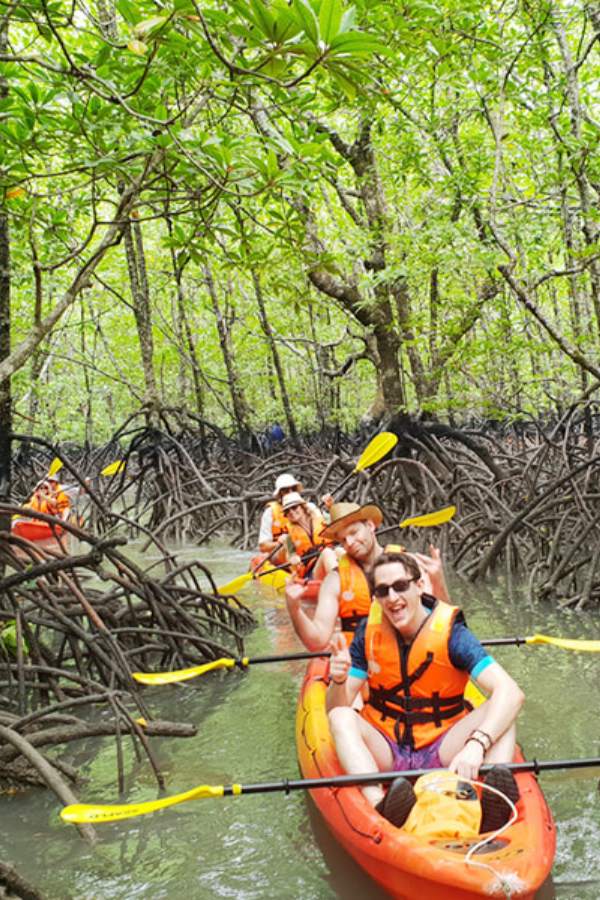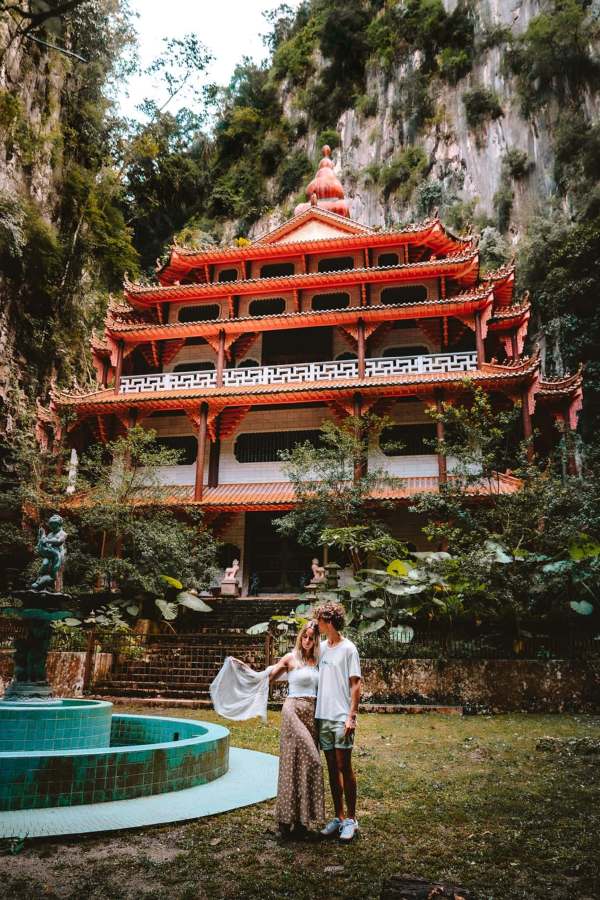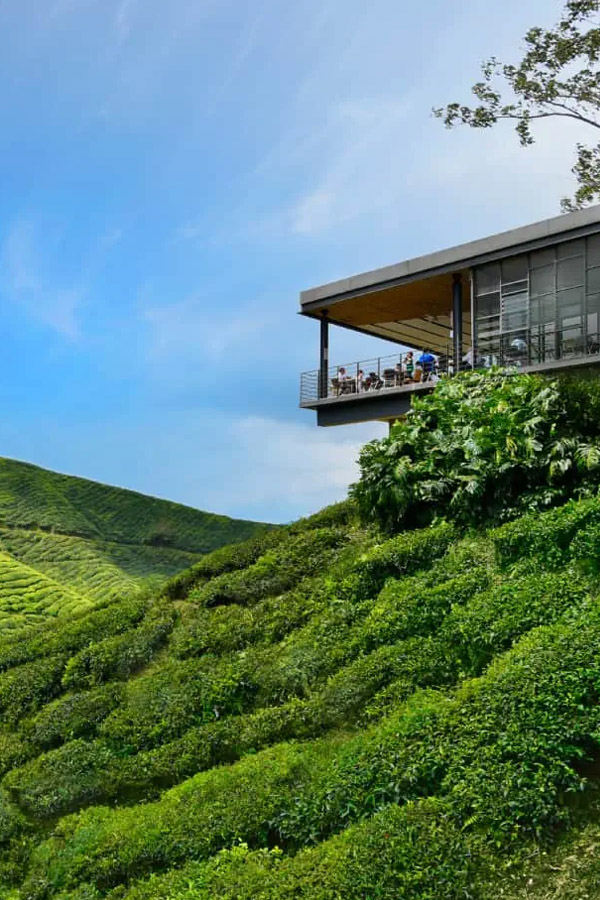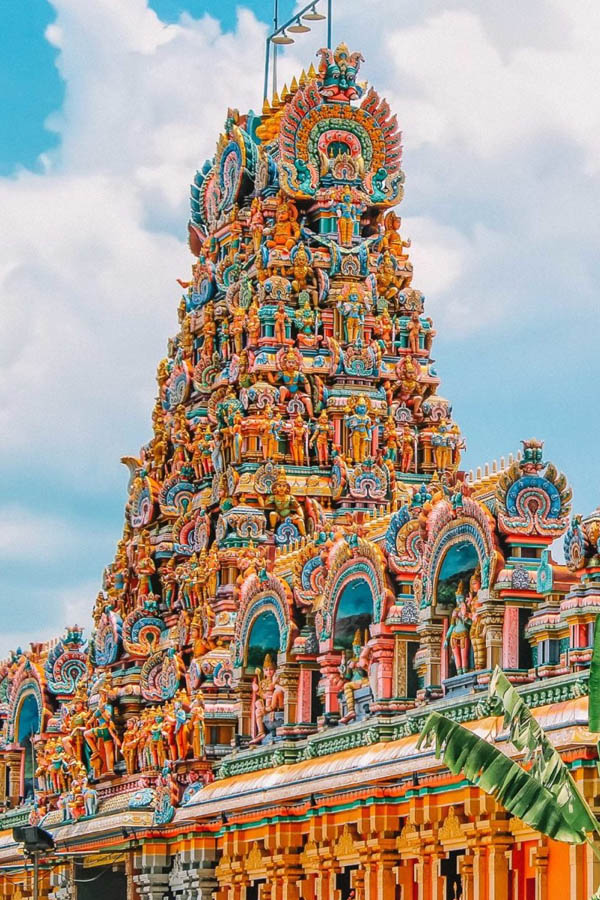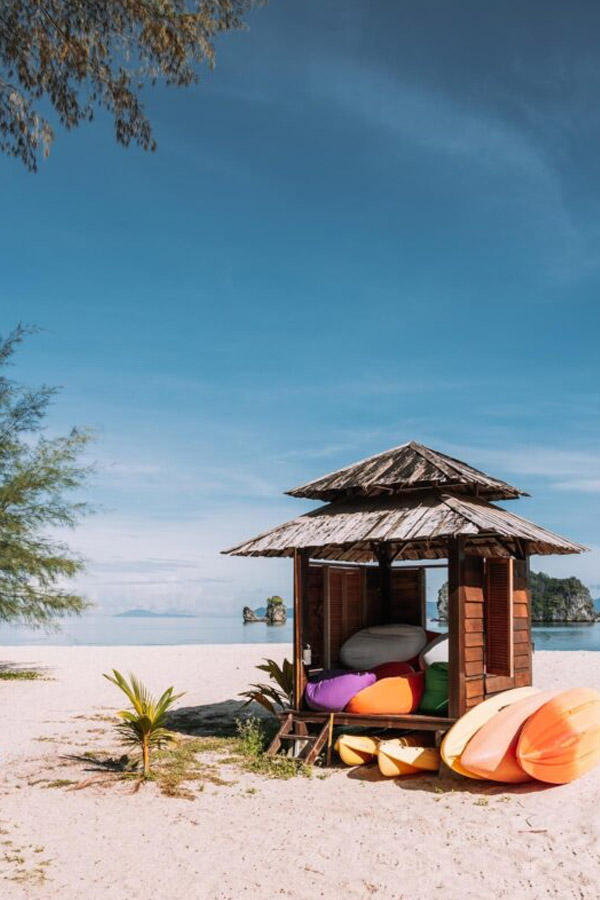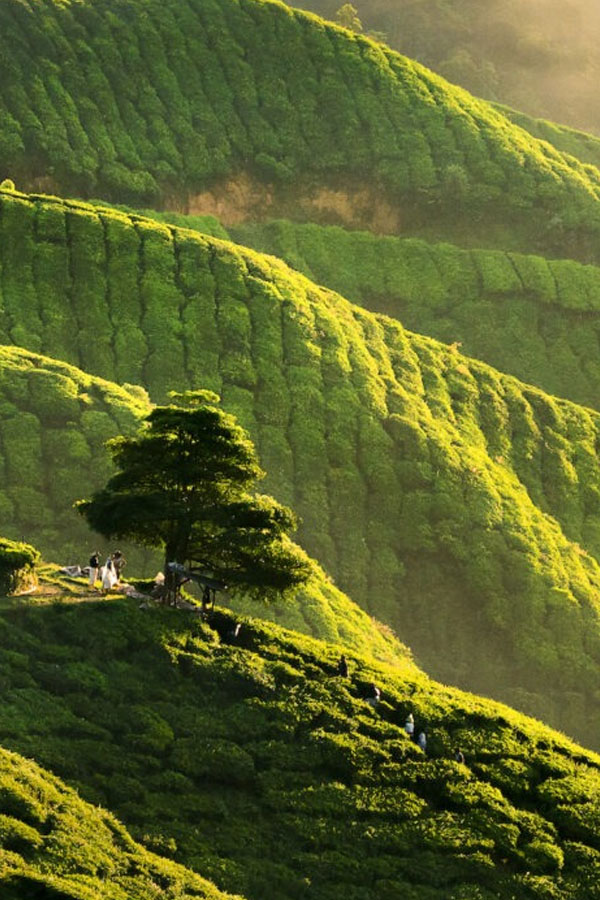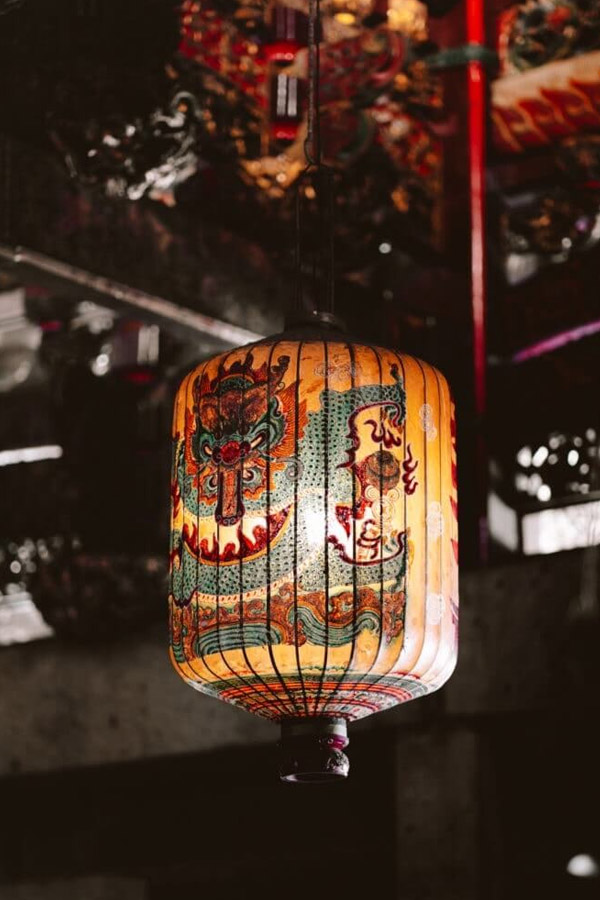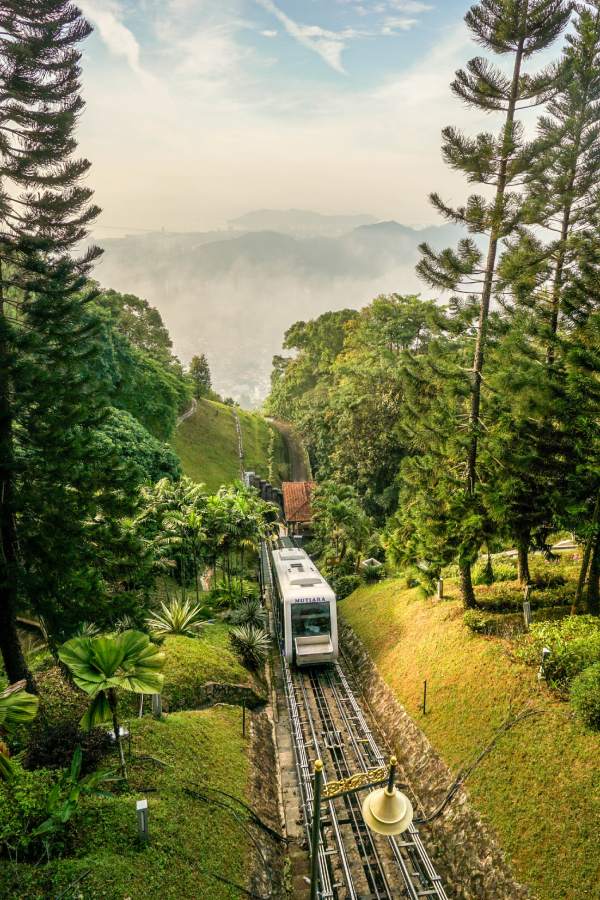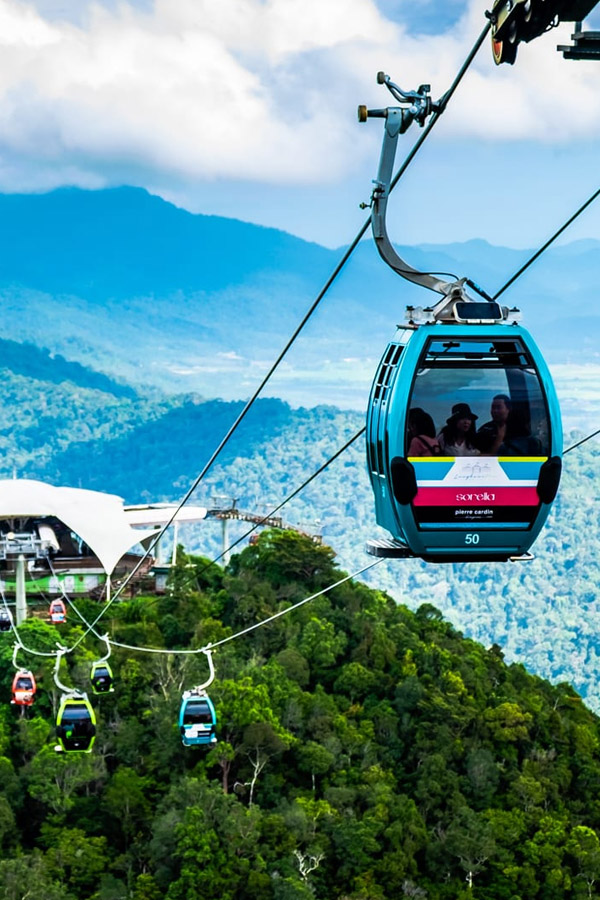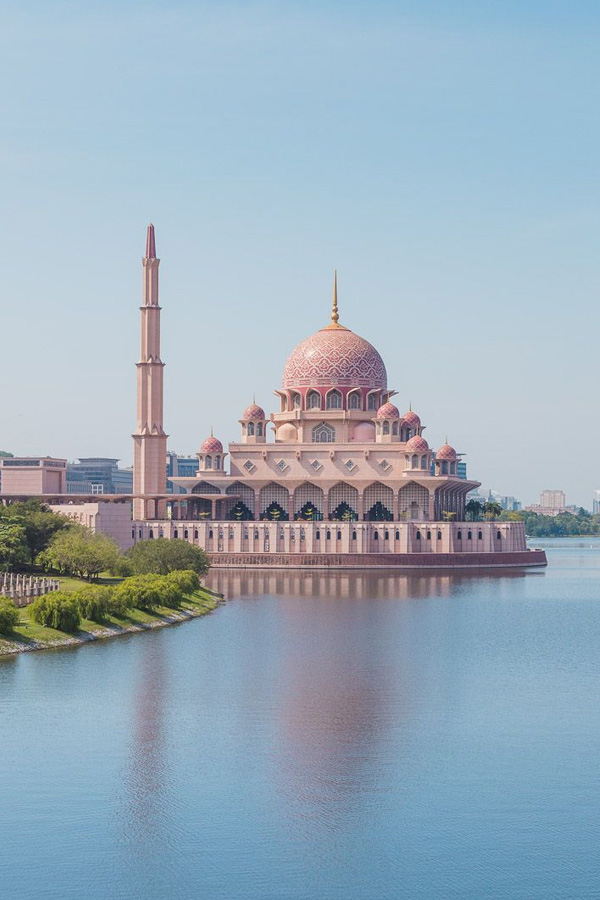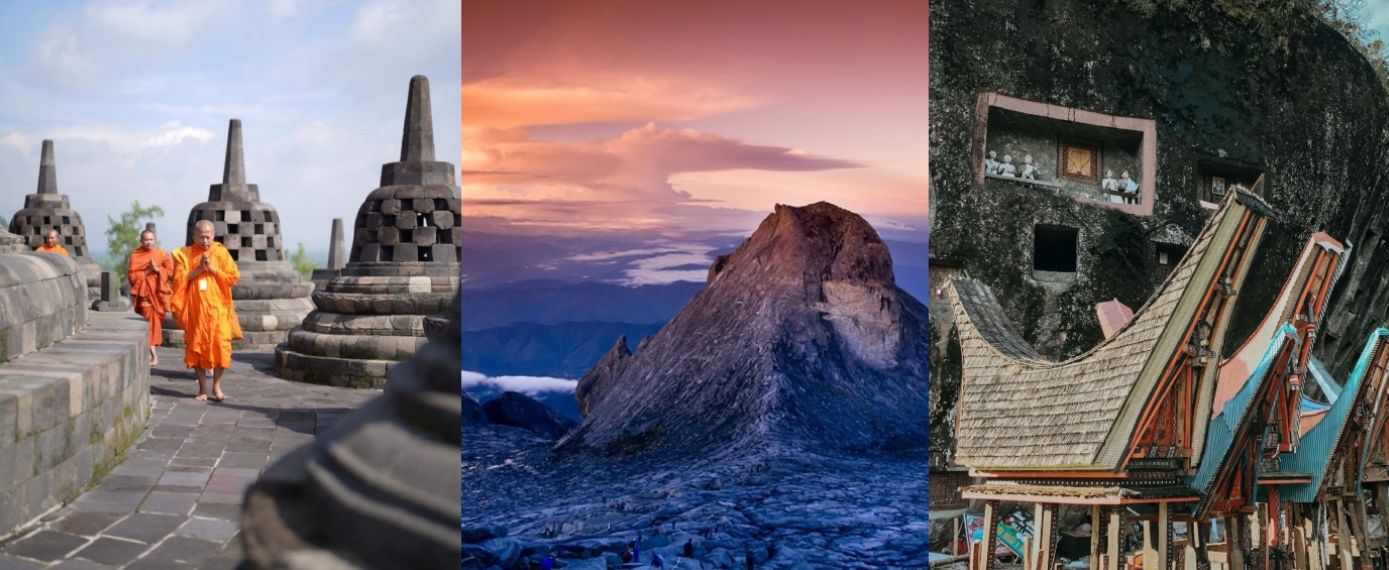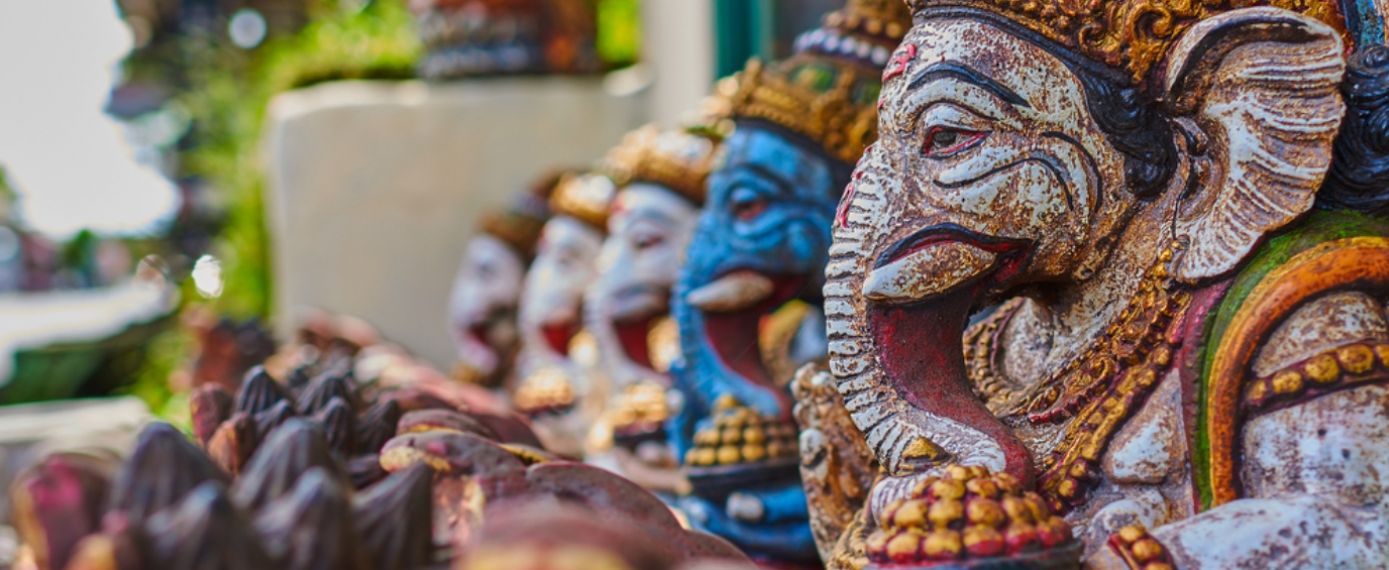
This 15-day tour to Malaysia includes a mix of big-city attractions and nature treasures. Begin in Langkawi, where you’ll visit the iconic Eagle Square and take a day trip to Kilim Geoforest Park. Then fly to Penang for sightseeing in Georgetown and a forest experience in the Habitat before continuing on to the lush tea plantations of the Cameron Highlands. Finish the adventure in Kuala Lumpur with city tours to both famous landmarks and heritage corners.
This 15-day tour to Malaysia includes a mix of big-city attractions and nature treasures. Begin in Langkawi, where you’ll visit the iconic Eagle Square and take a day trip to Kilim Geoforest Park. Then fly to Penang for sightseeing in Georgetown and a forest experience in the Habitat before continuing on to the lush tea plantations of the Cameron Highlands. Finish the adventure in Kuala Lumpur with city tours to both famous landmarks and heritage corners.
Highlights of this Tour
Our tour includes
Stay at
Hotel(14 nights)
Read more...Transfers
Travel by private & shared vehicle with driver according to daily schedule
Read more...Local Team
Private guides, drivers, your own travel expert
Read more...Meals
Daily scheduled meals including breakfast at hotel and lunch at local restaurant
Read more...Activities
12 Interesting Experiences
Read more...Services
In-tour offerings including entrance fees, boat trips, in-tour flights...
Read more...Stay at
Hotel(14 nights)
Read more...Transfers
Travel by private & shared vehicle with driver according to daily schedule
Read more...Local Team
Private guides, drivers, your own travel expert
Read more...Meals
Daily scheduled meals including breakfast at hotel and lunch at local restaurant
Read more...Activities
12 Interesting Experiences
Read more...Services
In-tour offerings including entrance fees, boat trips, in-tour flights...
Read more...Trip Overview
Malaysia Highlights - 15 days

Langkawi
Penang
Ipoh
Cameron Highlands
Kuala Lumpur

With over 15 years of experience, our team will help you choose the perfect for your adventure.

Authentic

Flexible

Persionalized

24/7 Support


Destinations of this tour
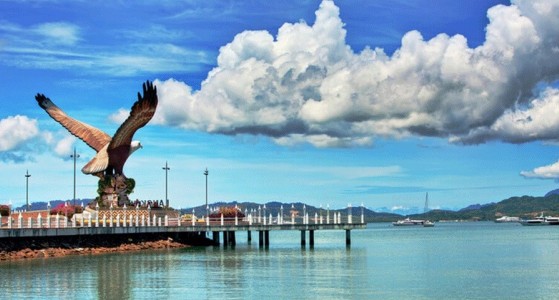
Langkawi is an archipelago of 99 islands in the Andaman Sea, 30 km off the mainland coast of Kedah state. It is a famous destination in Malaysia due to its natural white sand beaches, lush jungle foliage, craggy mountain peaks and duty-free status, where alcohol is affordable. Well known due to its astounding nature on show, there are plenty of attractions in Langkawi with lots of idyllic beaches, sparkling waterfalls and wonderfully wild nature parks to explore. In the north of Langkawi island lies Kilim Geoforest Park, a UNESCO World Heritage Site declared in 2007, featuring diverse flora and fauna, striking limestone karsts, caves, lagoons and mangrove forests. This area is made up of three river estuaries that attract wildlife such as sea otters, brown-winged kingfishers, sea eagles and swimming macaques. The best way to explore the reserve’s canals and waterways is by kayak. A guided tour will take you along a maze of trails, through the mangrove jungles lining the water and into limestone caves, including the Bat Cave (Gua Kelawar) where you can view stalagmites and stalactites as well as hundreds of insectivorous bats. Home to condensed rainforests stretched out to the entire island, Langkawi offers wide range of trekking from easy to extreme levels to cater for adventurers' all kinds of need. Most of the trekking trails and hiking routes in the island follow the slopes leading to the two highest mountains Gunung Raya and Gunung Mat Cincang where hundred of years old giant tall trees, rare birds and stunning flowers can be found.
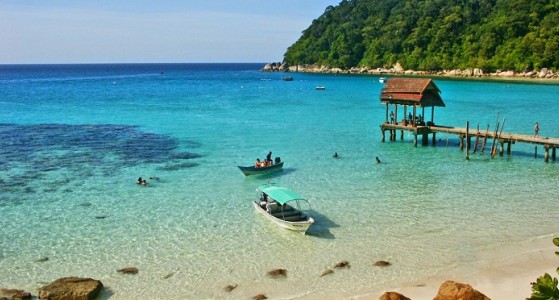
Penang is a state on the west coast of Peninsular Malaysia. Geographically, the state consists of Penang Island, and Seberang Perai, the mainland strip facing the island, which are separated by a small stretch of the Strait of Malacca. Penang is rich in culture and history, with a unique mix of Malay, Chinese, Indian and British influences. Visitors will find Penang brimming with charming historic buildings, ornate religious sites, sandy beaches, kampungs surrounded by rice paddies, vast unbeaten jungles, all topped with a splash of bustling city life. The unique way in which cultures have melded in Penang may be best represented in the food. Frequently voted among Asia’s top locations to eat street food, the blend of Malay, Chinese, Indian and European culinary traditions makes for an unforgettable banquet of taste sensations. Once was a British colonial holding, Penang has an abundance of classical Victorian architecture, particularly in the capital city, Georgetown. History buffs and architecture lovers in particular will appreciate the colonial-era Penang City Hall, Fort Cornwallis and the Penang State Museum. Part of Penang’s charm is that within minutes of admiring colonial architecture you can be wandering among the colorful statues of the Burmese Buddhist Temple or admiring the peaceful geometric patterns of the Kapitan Keling Mosque. Don’t miss the superb Pinang Peranakan Mansion, where the opulent lifestyle enjoyed by the wealthy Chinese Straits families has been recreated with antique furnishings from all over the world. If you enjoy getting back to nature, take a hike in the Penang National Park. Visit the nearby Penang Butterfly Farm for a colorful adventure the entire family will enjoy. And don’t miss the tropical spice garden, one of Malaysia’s premier eco-tourism attractions with more 100 herbs and spices growing wild.
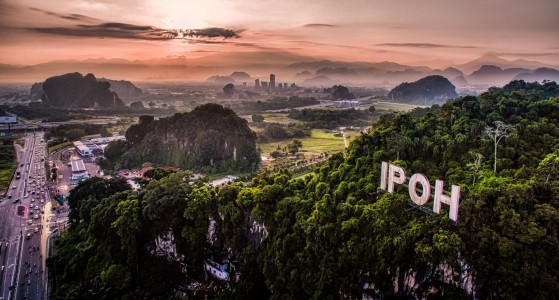
Ipoh is the capital of Perak and the third-largest city in Malaysia. Located between George Town and Kuala Lumpur, it is a popular destination for lovers of adventure, art, heritage, and architecture. Unlike other parts of the country, Ipoh is laid-back and simple – a bit of colonial, a bit of jungle, and a smattering of Southeast Asian food and culture. Split into two halfs by the River Kinta, the little town has the old town on the west side and the new town on the east. One can see the ancient temples and colonial architecture in the old part and modern shopping complexes in the new part. Explore all the historical sites in the old town with a walk along the heritage trail about four miles length and three to four hours to complete. The trail will take you past all the most famous colonial buildings in the city, beginning from Ipoh’s Railway Station, as well as a number of shop houses that date from the Second World War. Ipoh is surrounded by a vast, limestone cave system, some of which have been turned into temples by the local Buddhists. The three most important sites are Ling Sen Tong Cave Temple, Sam Poh Tong Temple, and Kek Lok Tong Cave Temple. Among them, Sam Poh Tong Temple with an array of Buddha statues is considered to be the biggest temple in Malaysia and attracts crowds year-round. Ipoh is one of the most concentrated Chinese places in Malaysia. Its most famous laneway, Concubine Lane, is full of red lanterns reminding the image of an ancient Chinese town. Along two sides of the road are restaurants, fashion outlets and souvenir shops in traditional Chinese and European architectural styles. Take a walk at Concubine Lane in ancient views and enjoy Chinese food are unforgettable experiences for each visitor. There is some delicious Chinese food that can’t be missed such as Hainan chicken rice, Chinese tofu, fish ball noodles...
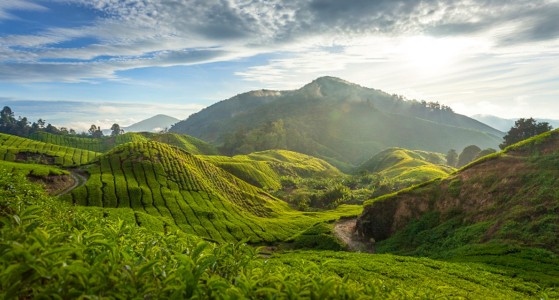
Cameron Highlands is a gorgeous hill station situated in Pahang, Peninsular Malaysia. The area is named after William Cameron, a British government surveyor who discovered the area in 1885 during a mapping expedition. During the colonial occupation era, Cameron Highlands gained fame due to its cool climate, attracting the British for a perfect summer retreat. Consequently, this hill station retains a quintessentially old English atmosphere with mock Tudor hotels serving tea in the afternoon and gin and tonics in the evenings. Cameron Highlands is well known for interesting hiking trails that are well kept, making things very easy experts and beginners alike. One of the most popular is the mystical Mossy Forest, the oldest forest in the area. It is known for the convoluted trees covered in moss that gives it an enchanted forest look. The paths have been mostly covered by wooden bridges making it quite an easy trek. For adventure lovers, there is a network of jungle trails taking in most of the major attractions and when combined with the roads will allow you to walk through most of the best areas from town to town. Most of the trails start, end, or can be combined with other trails to bring you to and from Tanah Rata. Cameron Highlands is also home to numerous agricultural farms where visitors can obtain fresher-than-fresh produce. One can visit a sweet-smelling strawberry plantation, a sprawling tea estate, or a prickly cactus farm for sightseeing.
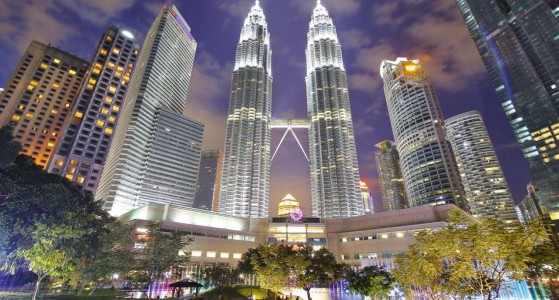
Kuala Lumpur is a diversity cultural melting pot, where jade-topped Chinese gates open out onto palm-lined squares, Indian restaurants serve banana leaf curries in marigold-scented alleyways, and old-fashioned Malay villages lie squeezed between the skyscrapers. Founded in 1857 under British rule as a tin mining outpost, Kuala Lumpur is fairly new as far as Malaysian cities go and does not have the rich history like Georgetown or Malacca. After a couple of decades of fluctuation, Kuala Lumpur began to prosper and was made capital of the Federated Malay States in 1896. Today, Kuala Lumpur is the capital of one of the economic powerhouses of Asia. Kuala Lumpurites come in all sorts. Malaysian and Chinese make up 80 percent of the population, and about 7 percent are Indians. Among the rest are offspring of intermarriages between races. Most Kuala Lumpurites speak at least two languages, one of which is Malay, or Bahasa Malaysia, the national language; some speak up to five – including Chinese and Indian dialects.
OTHER TOURS YOU MAY LIKE
As the name suggests, this 26-day package is a rich tapestry of myth, culture, and breathtaking scenery across Indonesia and Malaysia. Delve into the heart of Javanese tradition in Yogyakarta and the ancestral rituals in the highlands of Tana Toraja. Discover the wild edge of Borneo in Balikpapan, the modern pulse of Kuala Lumpur, the colonial charm of Melaka, and the heritage-laden streets of Kuching. Finally, bask in the natural beauty of Kota Kinabalu, where mountain and sea meet in perfect harmony. Each stop tells a story, and every landscape holds a legend.
Only From $7487/person
All Inclusive ServiceThis Tour
This fascinating 16-day tour offers the perfect balance between exploring the vibrant cities of Kuala Lumpur and Penang, and relaxing on the idyllic beaches of Bali and the lush Cameron Highlands. It provides ample time to enjoy some incredible sights and activities, as well as time to simply slow down and take in the surroundings, whether spending a day around unique wonders of Georgetown, lazing on a Sanur beach, or sipping a hot tea while indulging in the vast plantations. This itinerary for Malaysia and Indonesia will give you some inspiration for your next vacation to this part of Southeast Asia.
Only From $3504/person
All Inclusive ServiceThis Tour
This thoughtfully curated tour across Vietnam, Cambodia, Malaysia, and Indonesia invites you to experience a rich tapestry of cultures, landscapes, and local life. Begin in Vietnam, traversing the vibrant streets of Hanoi, the emerald waters of Halong Bay, and the lantern-lit magic of Hoi An. In Cambodia, uncover ancient wonders in Siem Reap, connect with local traditions in Banteay Chhmar, and venture into the unspoiled nature of Koh Kong Province. Continue to the modern heartbeat of Kuala Lumpur, then delve into the spiritual and natural beauty of Bali, from Ubud’s lush jungles to Kintamani’s volcanic landscapes and Sanur’s coastal tranquility. Get ready for a month-long journey through Southeast Asia’s most captivating destinations, where every stop tells a new story.
Only From $6240/person
All Inclusive ServiceThis Tour

Customize this tour with us!


Adventure Travel Trade Association


American Society of Travel Agents


Family Travel Association


TripAdvisor


The guardian


World Travel Awards
ABOUT US
Why Us Trusted Travel Company What Makes Us Different Meet Our Team Southeast Asia Travel Guide Southeast Asia Tour Highlights Pre-departures Deposit & Payment Cancellation Policy Terms and Conditions Contact UsOur Destinations
Vietnam Tours Cambodia Tours Thailand Tours Indonesia Tours Malaysia Tours Philippines Tours Laos Tours Singapore Tours Myanmar ToursMulti-country
Vietnam Cambodia Tours Vietnam Cambodia Laos Tours Vietnam Thailand Tours Vietnam Cambodia Thailand Tours Thailand Malaysia Tours Thailand Malaysia Indonesia Tours Indonesia Thailand Tours Indonesia Malaysia Vietnam Tours Southeast Asia Tours 26 - 30 Days Southeast Asia Tours 18 - 26 Days Southeast Asia Tours 12 - 18 DaysTravel Themes
Best Southeast Asia Tours Southeast Asia Heritage & Culture Tours Southeast Asia Nature & Wildlife Tours Southeast Asia Family Tours Southeast Asia Honeymoon Tours Southeast Asia Adventure & Outdoor Tours Southeast Asia Beach & Island Tours Southeast Asia Cruise Tours Southeast Asia Tours 8 - 12 Days Southeast Asia Tours < 8 DaysSOUTHEAST ASIA TRAVEL COMPANY LIMITED
As local Southeast Asia Tour experts with over 15 years of experience, Southeast Asia Travel company has built a solid reputation as experts in designing custom tours across Southeast Asia including Vietnam, Laos, Cambodia, Thailand, Singapore, Malaysia, Indonesia, Myanmar, Philippines... Every Southeast Asia tour we offer is exclusively private, ensuring flexibility to suit individual preferences.
Read more